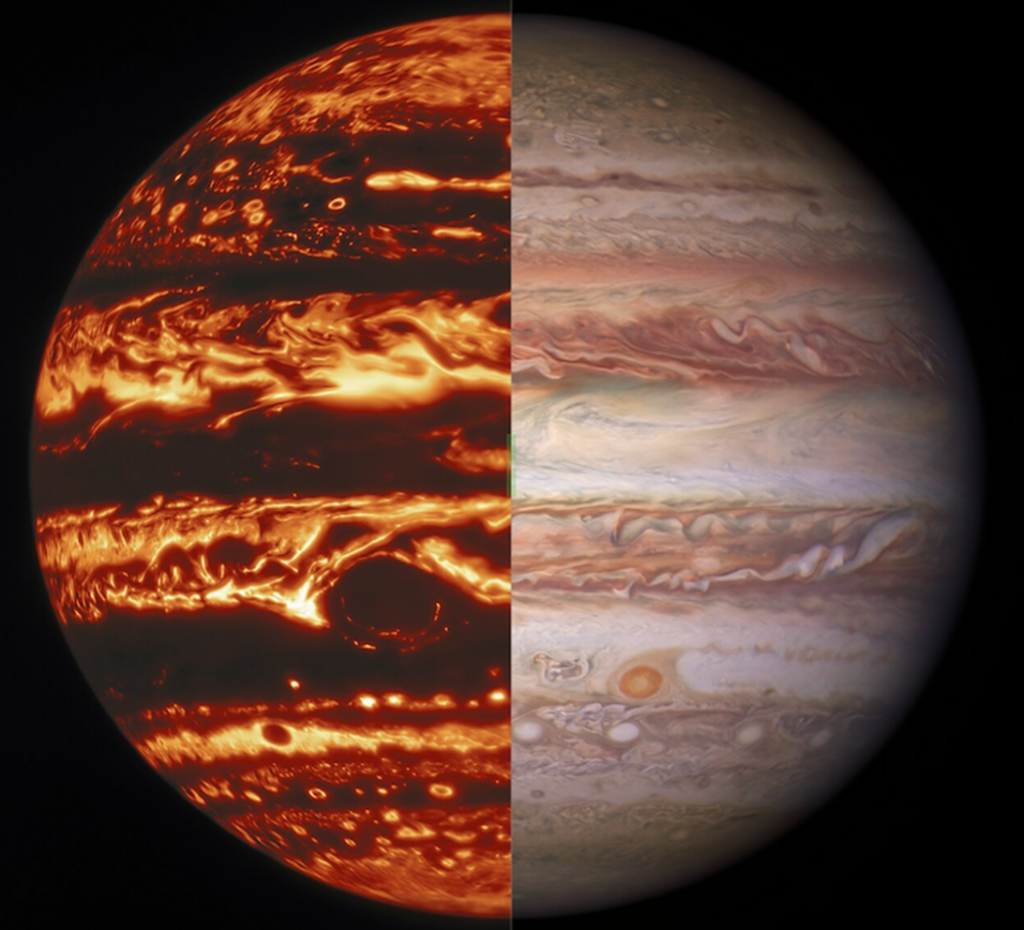Jupiter’s Great Red Spot is even more of a towering tempest than astronomers previously suspected. Images and other data from NASA’s Juno spacecraft released this week show that the solar system’s most famous roiling storm extends over 200 miles (350 kilometers) below the gas giant planet’s cloud tops.
«Previously, Juno surprised us with hints that phenomena in Jupiter’s atmosphere went deeper than expected,» Juno principal investigator Scott Bolton said in a statement. «Now, we’re starting to put all these individual pieces together and getting our first real understanding of how Jupiter’s beautiful and violent atmosphere works — in 3D.»
Bolton is lead author of a paper published Thursday in the journal Science.
Juno, which has been orbiting Jupiter since 2016, is equipped with a device called a microwave radiometer that provides scientists a view below the tops of clouds that most normal optical telescopes see when pointed at the massive planet. The latest data shows that the red spot extends no more than about 300 miles (500 kilometers) deep from the cloud tops, while other, smaller storms extend a still impressive 60 miles (100 kilometers) downward.
Juno data also presented a potential clue to another mystery: how deep jet streams in the planet’s atmosphere that separate its distinctive white and reddish bands are formed.
«Our study has shown that those colorful bands are just the ‘tip of the iceberg,’ and that the mid-latitude bands not only extend deep, but seem to change their nature the further down you go,» explains Dr. Leigh Fletcher, a Juno participating scientist from the University of Leicester and lead author of another study, published in the Journal of Geophysical Research-Planets.
The Juno data suggests that changes in temperature or in levels of ammonia present, or both, have something to do with the behavior of the bands.
Astronomers, including some involved with the Juno mission, will get a chance to take an even more detailed look at Jupiter in the future with the upcoming launch of NASA’s next generation James Webb telescope in the coming months.
